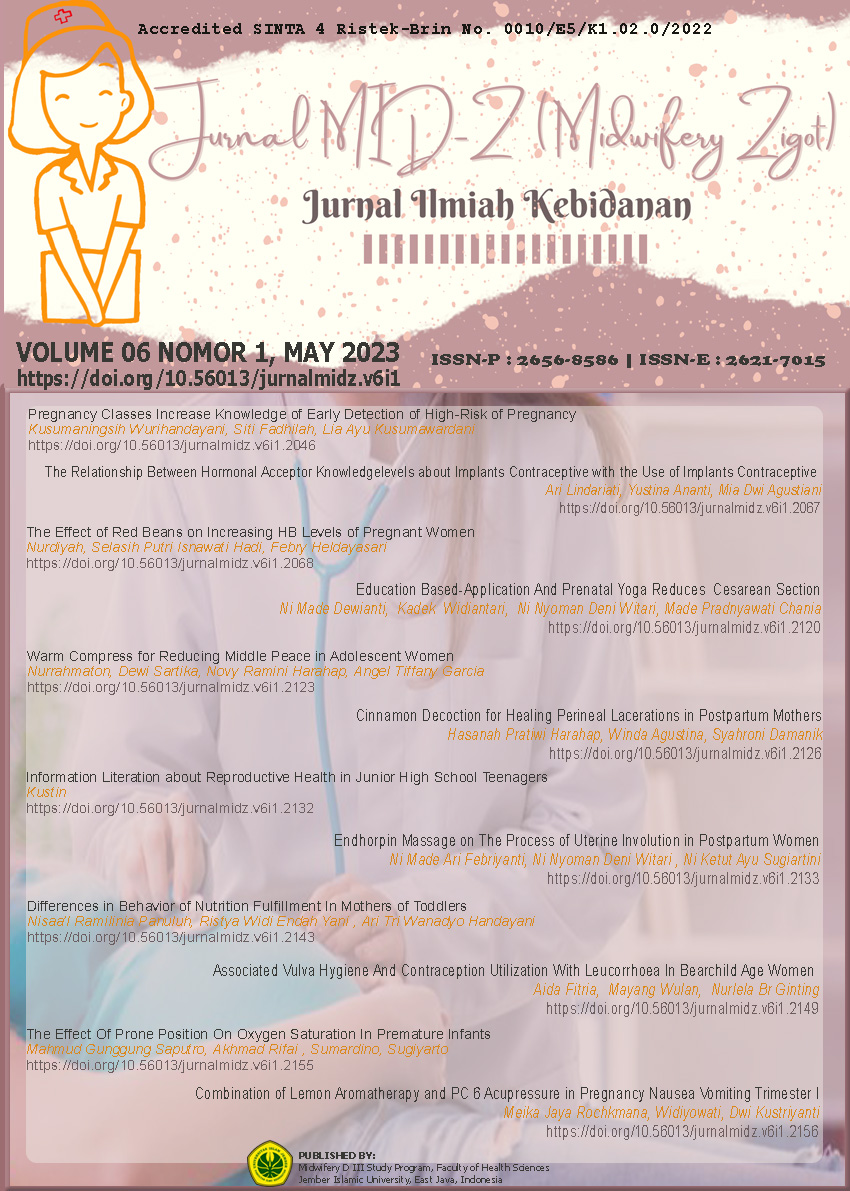Warm Compress For Reducing Middle Peace In Adolescent Women
DOI:
https://doi.org/10.56013/jurnalmidz.v6i1.2123Abstract
According to data from WHO in 2018 that the incidence of dysmenorrheal. On average <50% of women in each country experience dysmenorrhea differently, such as in America about 60%, in Sweden around 72% and in the UK a study states that 10% of high school adolescents appear absent 1-3 days per month. This study aimed to analyze the effect of giving warm compresses to the reduction of menstrual pain in adolescent girls of class VIII MTS YP Al - Azhar, Medan Sunggal District, Medan City. The research method used quasi-experimental in the form of pre-experimental, one group pretest - posttest. The population was 55 young women consisting of class VIII totaling 4 classes at the school. Sampling technique was using purposive sampling amount 30 people. Analysis of the data used was a T-test then the data was presented in the form of frequency distribution tabulation. The results showed that the average menstrual pain scale of adolescent girls before the warm water compress was 2.1 and after the intervention the pain scale decreased to 0.1, which means there was a decrease in menstrual pain in adolescent girls. The results of the Paired Sample T-Test were known on the menstrual pain scale variable, the p-value = 0.000 <.05. The conclusion shows that there is the Effect of Warm Compresses on Reducing Mild Menstrual Pain in Young Women at MTS YP Al – Azhar, Medan Sunggal District, Medan City.
Downloads
Published
How to Cite
Issue
Section
License
Copyright (c) 2022 Nurrahmaton Nurrahmaton, Novyramini Harahap, Angel Tiffany Garcia

This work is licensed under a Creative Commons Attribution-ShareAlike 4.0 International License.
Jurnal Mid-Z (Midwifery Zigot) Jurnal Ilmiah Kebidanan memberikan akses terbuka terhadap siapapun agar informasi dan temuan pada artikel tersebut bermanfaat bagi semua orang. Semua konten artikel Jurnal Mid-Z (Midwifery Zigot) Jurnal Ilmiah Kebidanan dapat diunduh secara gratis tanpa dipungut biaya sesuai dengan lisensi creative commons yang digunakan.

Jurnal Mid-Z is licensed under a Creative Commons Attribution 4.0 International License





















